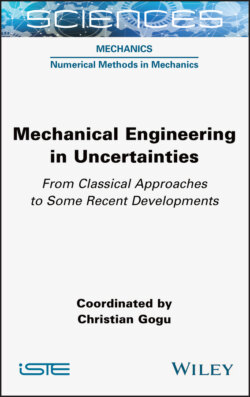Читать книгу Mechanical Engineering in Uncertainties From Classical Approaches to Some Recent Developments - Группа авторов - Страница 29
1.9. Evaluation of epistemic uncertainty modeling
ОглавлениеThe quantification of epistemic uncertainties is a major challenge for achieving an integral framework for the quantification and propagation of uncertainties in industrial problems. Depending on the nature of the lack of knowledge, these uncertainties can be modeled in different ways. In some situations, epistemic uncertainties may be due to insufficient sampling, in which case the probabilistic framework, through the use of probability boxes (p-boxes), is probably the most relevant framework.
In other situations, no samples may be available and obtaining them would be too time consuming or costly, so only expert opinion can provide information on the uncertainties involved. Some consider that such advice cannot be objective and does not need to be mixed with rigorous, sample-based uncertainty quantification within a probabilistic framework. Others consider that, although imperfect, because it is subjective, expert opinions can contain useful information for uncertainty quantification and, rather than ignoring them, have focused on developing theories in order to be able to model the uncertainties expressed in this way. This is particularly the case with the theories of possibility and evidence that we have reviewed. Basically, both theories have the same objective, which is to bound an unknown probability distribution function by the construction of an uncertainty structure based on expert opinion. It is worth noting, however, that possibility theory is based on axioms which are quite different from those of probability theory, which can sometimes lead to counterintuitive results. These axioms also imply a relatively wide bounding for the unknown probability distribution function. Evidence theory, on the other hand, allows a narrower bounding for the distribution function, provided that it is possible to construct BPA functions with a very fine granularity. It also does not involve the more constraining axioms of possibility theory. To conclude, let us also note that in most real problems, epistemic and aleatory uncertainty modeling must be simultaneously considered. This combination of different approaches remains a challenge, especially from the point of view of the associated numerical costs.
